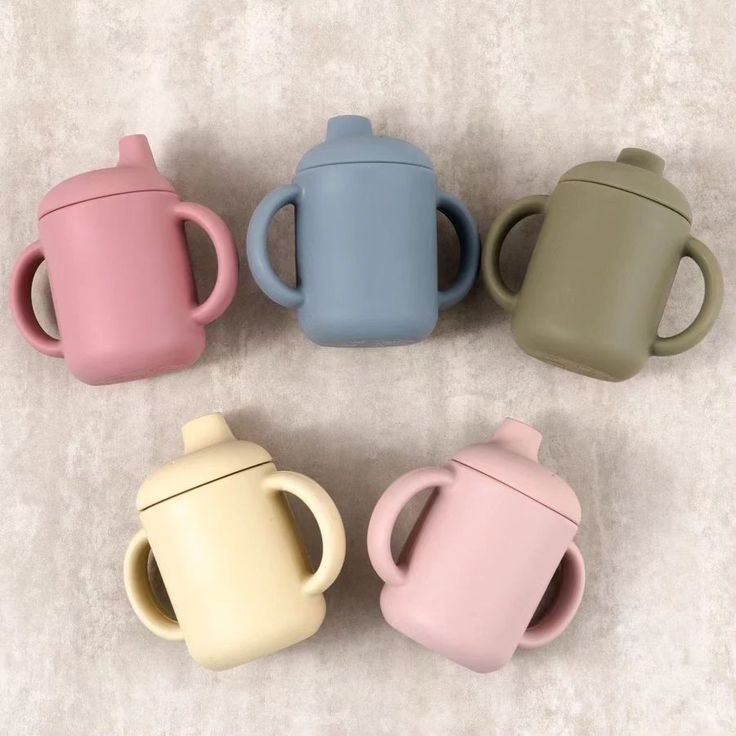views
Feeding a newborn is one of the most important aspects of early parenting. Whether a parent chooses to breastfeed formula-feed or use a combination of both having the right tools makes the experience more comfortable for both baby and caregiver. Among the essentials are newborn feeding cups and baby bottles. While traditional bottles have long been a popular choice feeding cups are gaining recognition for their unique benefits especially in hospitals and among breastfeeding mothers. In this we will explore the role of newborn feeding cups their advantages and how to choose the best bottle for a newborn including features that promote healthy feeding habits and reduce common feeding-related issues.
Newborn feeding cups are small specially designed containers that allow parents or caregivers to feed expressed breast milk or formula to newborns without the use of a bottle or nipple. Typically made from soft silicone or BPA-free plastic feeding cups are designed with a curved edge that helps control the flow of milk making it easier for the baby to sip. These cups are particularly helpful in medical or neonatal settings especially for premature babies or infants with latch difficulties. Unlike bottles feeding cups eliminate nipple confusion making it easier for breastfed babies to return to the breast without issue. For mothers who are committed to exclusive breastfeeding but temporarily need to supplement or feed expressed milk feeding cups serve as a useful non-invasive tool.
There are several benefits to using feeding cups for newborns. First, they support breastfeeding by avoiding artificial nipples. When a baby drinks from a bottle with a synthetic nipple, they may develop a preference due to the ease of milk flow which can undermine breastfeeding efforts. A feeding cup on the other hand requires the baby to use a similar sucking action as they would at the breast. Additionally feeding cups are easy to clean and sterilize because of their simple design which helps prevent bacterial buildup. For hospitals and low-resource settings feeding cups are cost-effective and reduce the risk of contamination associated with complex bottle parts. Moreover, feeding cups allow caregivers to monitor exactly how much milk the baby is consuming making them ideal for situations where fluid intake must be closely tracked.
Despite these benefits feeding cups are not without their challenges. Feeding from a cup can be messy and time-consuming particularly for caregivers unfamiliar with the technique. Babies also need to be in an upright or semi-upright position and the process requires close attention to avoid spillage or choking. Therefore, feeding cups may not be suitable for every situation or for long-term use. They are most effective as a temporary solution or for supplementing breastfed infants without compromising breastfeeding.
While feeding cups offer a great alternative baby bottles remain the primary method of feeding for most families especially those who rely on formula or need to bottle-feed expressed breast milk regularly. Choosing the best bottle for newborn is a decision influenced by many factors including the baby’s age feeding habits any medical conditions (such as colic or reflux) and the parents’ lifestyle. The best bottles for newborns mimic the natural breastfeeding experience minimize air intake and are easy to assemble clean and sterilize.
One of the key features to look for in a newborn bottle is a slow-flow nipple. Newborns have a small sucking capacity and can easily choke if milk flows too quickly. Slow-flow nipples regulate the milk stream giving the baby more control and reducing the risk of overfeeding. Another essential feature is an anti-colic valve system. Many modern bottles are designed with vents or systems that reduce the amount of air swallowed during feeding which helps prevent colic gas and spit-up. Brands like Dr. Brown’s Philips Avent and Comotomo are known for their innovative vent systems and are highly rated by parents and pediatricians alike.
The material of the bottle is another consideration. Most bottles are made from BPA-free plastic which is lightweight and shatter-resistant. However, some parents prefer glass bottles due to their durability and chemical-free composition. Silicone bottles are a newer option offering a soft breast-like feel and being more resistant to temperature changes. While glass is eco-friendly and easy to sterilize it is heavier and prone to breakage. Plastic is more affordable and practical, but some parents have concerns about microplastics and long-term safety. Ultimately the choice depends on the caregiver’s comfort lifestyle and commitment to safety.
In addition to materials and nipple flow bottle shape can also influence feeding success. Wide-neck bottles are easier to clean and mimic the natural shape of the breast which can help babies transition between breast and bottle more easily. Ergonomic designs also allow for a comfortable grip both for the parent and the baby. Some bottles even have angled necks to reduce air intake and facilitate a more natural feeding position which can be especially helpful for babies with reflux.
Cleaning and sterilization are critical when choosing a bottle. Newborns are vulnerable to infections so it’s vital that bottles are easy to take apart and clean thoroughly. Many brands offer dishwasher-safe bottles, and some include sterilizer kits. It’s essential to check that all parts can be boiled or steam-sterilized without warping. Simpler designs generally offer better hygiene and fewer places for milk residue or bacteria to collect.
While there are countless options on the market some standout baby bottles for newborns include the Comotomo Natural Feel Bottle which is made from soft silicone and features dual anti-colic vents. Dr. Brown’s Original Bottle is another popular choice due to its internal vent system that significantly reduces colic and gas. Philips Avent Natural Baby Bottle is also highly regarded for its wide nipple design and flexible structure which helps breastfed babies switch easily between breast and bottle. Each of these bottles comes in different sizes and nipple flow rates allowing parents to customize their feeding experience as the baby grows.




Comments
0 comment